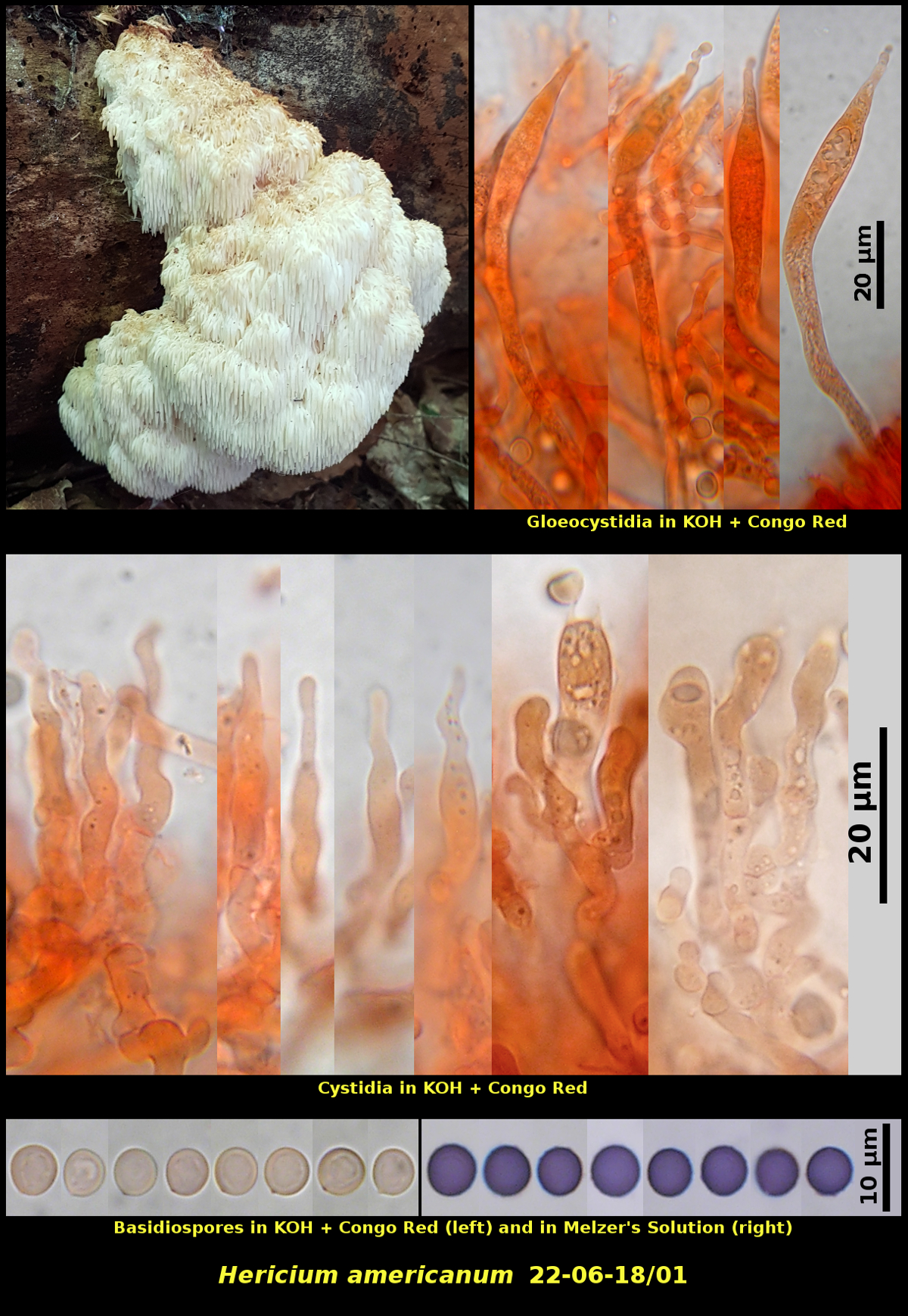Fleshy Fungi of New Brunswick >>
Hericium americanum
Hericium americanum Ginns

Solitary on dead log of Fagus grandifolia, Spednic Lake, Spednic Lake Protected Natural Area, New Brunswick (22-06-18/01).
Basidiospores white in spore print, subglobose, with an inconspicuous apiculus, finely roughened with minute warts, strongly amyloid, 5.0-6.1 X 4.7-5.5 µm, D/d = 1.03-1.13 (average[28]: 5.6 X 5.2 µm, D/d = 1.08). Cheilocystidia abundant toward the tips of the teeth, irregularly cylindrical to ventricose-rostrate, strongly tortuous and wavy, clamped at the base. Gloeocystidia abundant throughout the hymenium, arising from deeply within the trama, ventricose to lanceolate, with very long stipes, often with tortuous to submonilioid tips.
Hericium americanum and H. erinaceum are both known in New Brunswick and are both characterized by white icicle-like fruiting bodies bearing teeth that are 1-2 cm long. Hericium americanum differs from H. erinacea in having branched fruiting bodies rather than having them compact and unbranched. In the case of Collection 22-06-18/01 the fruiting bodies are rather densely branched and almost appear to be unbranched. Sometimes young or immature fruiting bodies of H. americanum may be unbranched and could be mistaken for those of H. erinaceum, but Collection 22-06-18/01 produced a heavy spore print, so we know it was mature.
The basidiospores of Hericium species are very strongly amyloid, so much so that the non-amyloid apiculus is very hard to see. In the illustration here the apiculus can be seen quite well in most of the spores stained with Congo Red but is just barely visible as a light-coloured spot in the Melzer's-stained spore second to right. Although the spores are finely roughened, this feature is not apparent with Congo red but is definitely visible with Melzer's Solution. The roughened amyloid basidiospores and prominent gloeocystidia arising from layers below the basidia reveal the relationships of Hericium americanum to other members of the Russulales.
Photograph: David Malloch (22-06-18/01).